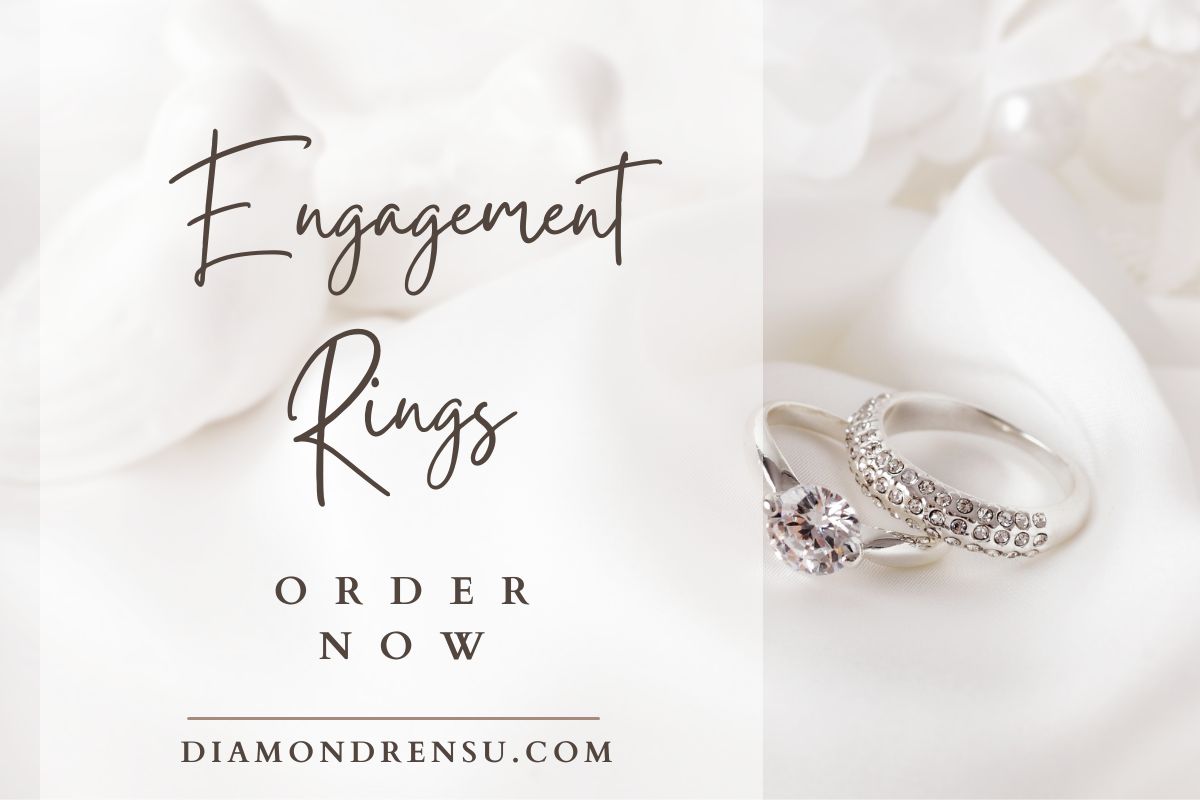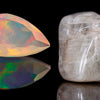
Melee Diamond Sourcing: Ethical Considerations and Industry Standards
When you're exploring diamond jewelry, it's likely that you will come across the term "melee diamonds." These small diamonds, typically weighing less than 0.2 carats, are often used to accentuate larger center stones and add brilliance to a piece of jewelry. Their size may be diminutive, but melee diamonds play a crucial role in the jewelry industry, not only by contributing to a piece's overall sparkle but also by adding to its design complexity and aesthetic appeal.
For experts and enthusiasts alike, assessing the quality of melee diamonds is an important aspect of ensuring the trustworthiness and value of diamond jewelry. Due to their size, identifying the characteristics and authenticity of melee diamonds requires expertise and the use of advanced technology. As the industry advances, distinguishing between natural and synthetic melee diamonds has become a crucial skill, ensuring both consumer confidence and industry integrity.
Your understanding of melee diamonds can enhance your appreciation of diamond jewelry and make you a more informed buyer. Knowing the impact melee diamonds have on the beauty and craftsmanship of jewelry pieces is essential, as is being aware of the challenges the industry faces in certifying their authenticity. This knowledge will guide you in making purchases that align with your values and expectations, and enable you to recognize the artistry involved in creating pieces that feature these tiny yet significant gems.
Basics of Melee Diamonds
Melee diamonds are the tiny yet brilliant gems that play a critical role in jewelry design, providing sparkle and complementing larger gemstones. Understand these essentials to appreciate their charm and utility fully.
Definition and Characteristics
Melee diamonds are small diamonds, typically weighing less than 0.2 carats. They are known for their ability to add sparkle and ornate detail to jewelry pieces. Melee diamonds can range in quality, often assessed by the 4Cs: color, clarity, cut, and carat weight. Their small size requires precision in cutting to ensure maximum brilliance.
Roles in Jewelry Design
In jewelry settings, melee diamonds serve primarily as accent diamonds. They enhance the beauty of the center stone and bring a piece to life through a halo, pave, or channel setting. Settings for melee diamonds are designed to secure these tiny stones while showcasing their sparkle.
Types of Cuts
Melee diamonds come in various cuts such as the full cut, which is a miniature version of a round brilliant cut with 57 or 58 facets, and the single cut, with 16 to 18 facets. Fancy shapes for melee include tapered baguette, straight baguette, and trillion cut melee diamonds. Each cut offers a unique appearance and interaction with light.
Grading and Quality
While melee diamonds are not typically graded by laboratories like GIA due to their size, they are assessed based on color and clarity by manufacturers. High-quality melee should match the color and clarity of the main diamond in a piece to ensure cohesive sparkle and appearance.
Size and Carat Weight
Melee diamonds are categorized by their size ranges and carat weight. The term "total carat weight" refers to the combined weight of all melees in a piece. A full-cut melee diamond may range from 0.005 carats to 0.2 carats, contributing to the overall weight but not overwhelming the main gemstone.
Diamond vs. Simulants
Melee diamonds, both lab-created diamonds and natural diamonds, may be indistinguishable to the naked eye but can differ significantly in composition from simulants like cubic zirconia and moissanite. Recognizing genuine melee diamonds involves understanding their physical and optical properties compared to simulants.
Setting and Styles
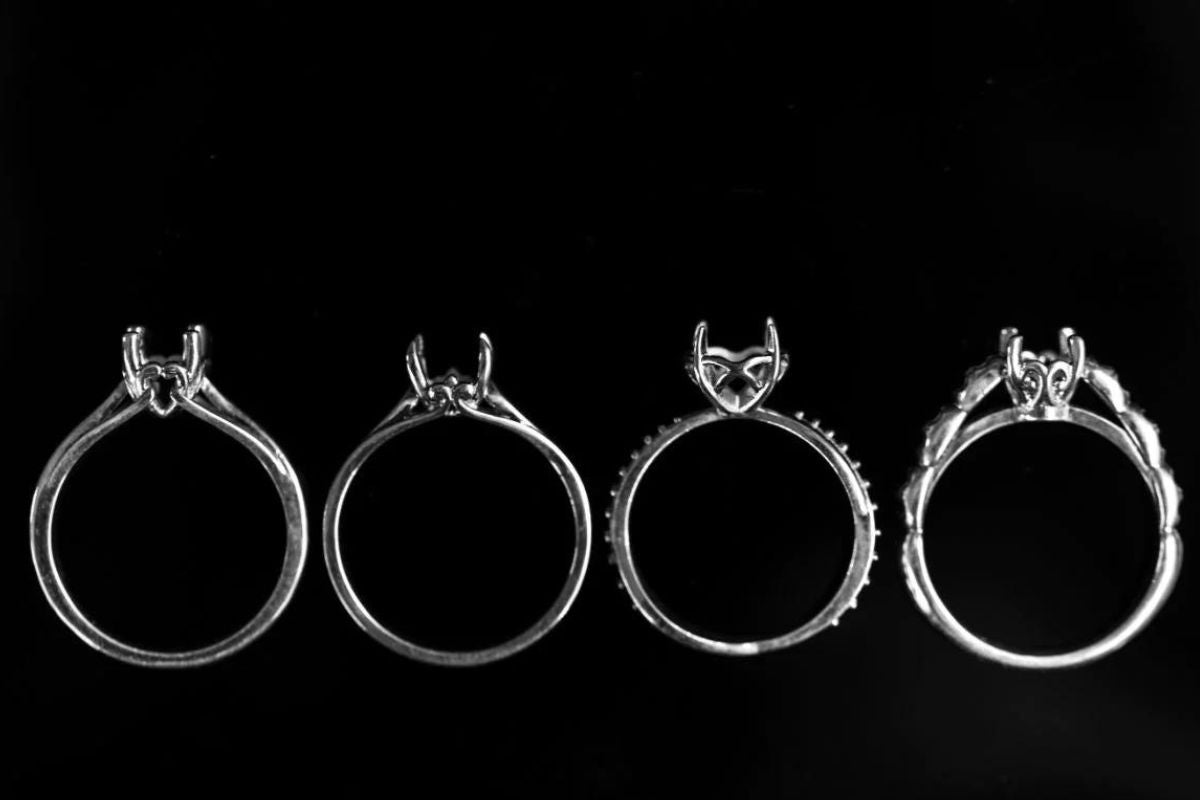
| Setting/Style | Description |
|---|---|
| Pave Setting | Small diamonds set closely together, often in a honeycomb pattern, using minimal metal to create a sparkling surface. |
| Channel Setting | Diamonds set in a channel formed between two metal strips, creating a smooth and continuous row of stones. |
| Micro Pave | Similar to pave setting, but with even smaller diamonds, requiring meticulous craftsmanship and precision. |
| Bezel Setting | Diamonds are encircled by a metal rim, holding them securely and offering a smooth and modern appearance. |
| Shared Prong | Diamonds set between two prongs, with each prong securing two adjacent stones, allowing more light to enhance brilliance. |
| Cluster Setting | Multiple small diamonds grouped closely together to create the illusion of a larger diamond or a unique design. |
| Flush Setting | Diamonds set directly into the metal surface, with the tops of the stones flush with the surrounding metal. |
| Invisible Setting | Diamonds set closely together without visible metal, creating a seamless and continuous surface of diamonds. |
| Marquise and Round Melee | Common shapes for melee diamonds, offering versatility in various settings and designs. |
| Rose Cut Melee | Melee diamonds cut with a flat base and a faceted dome, resembling the shape of a rosebud. |
When you're selecting jewelry, particularly melee diamonds, the right setting can accentuate the stones' brilliance and ensure their secure placement. From subtle enhancements in an engagement ring to bold statements in custom pieces, understanding how melee diamonds are used in various settings can significantly influence the design and aesthetic appeal of the jewelry.
Popular Diamond Settings
Melee diamonds are versatile and can be set in a variety of ways to complement both engagement ring designs and wedding bands. The pave setting, where diamonds are set closely together, creates a carpet of light and scintillation that enhances the main stone or delivers a stunning effect on its own. A halo setting surrounds a central stone with a circle of melees that creates an effect of greater size and opulence. Prong and channel settings are also common; prongs hold stones with minimal interference in light reflection, while channel settings offer a sleek, modern look with melee diamonds nestled in a row between bands of metal.
Incorporating Melee Diamonds
Your engagement rings and earrings can be brought to life with the addition of melee diamonds as accent stones. These smaller diamonds are known for their ability to add a dazzling effect around a larger stone or across a band. A classic three stone setting, which represents the past, present, and future, often uses melees as side stones to highlight the centerpiece. The role of melee diamonds is to enhance the overall sparkle of your jewelry piece without overpowering the primary gemstone.
Custom Jewelry and Melee
For a unique touch in your jewelry, consider custom work from jewelry designers. Melee diamonds provide endless possibilities within designer settings, allowing them to craft distinctive pieces tailored to your tastes. Whether you want a vintage-inspired engagement ring or a contemporary geometric jewelry piece, incorporating melee diamonds into your custom design can make your vision come to life in a way that's both personal and resplendent.
Diamond Shapes in Settings
The shape of melee diamonds matters in their settings. Round shape melees are a perennial favorite for their optimal reflection of light. However, other shapes like emerald, marquise, or princess cut melee diamonds might complement specific design elements in your jewelry. Round melee diamonds are particularly desirable for their versatility and brilliance, making them a trusted choice for any jewelry piece. It's important to choose a shape that corresponds with the aesthetics of the band and the central stone, if applicable.
Remember, when selecting a setting for your melee diamonds from a trusted vendor, consider how the design will wear over time and how it reflects your personal style. A setting should not only be beautiful but also functional, securing the diamonds for everyday wear.
Diamond Purchasing Guide
When considering a melee diamond purchase, your focus should be on understanding pricing, selecting legitimate retailers, ensuring the quality of the stone, accurately calculating carat weight, and reviewing diamond certifications.
Understanding Diamond Prices
Melee diamonds vary significantly in price based on size, quality, and whether they are natural or lab-grown. As melee diamonds are small, often used as accents, they are priced much lower than larger stones. Nevertheless, prices can escalate depending on their use in pieces like diamond engagement rings. Unlike larger stones, a melee diamond's price is not solely determined by carat weight but also by the cost of sourcing, cutting, and whether it's sold individually or in bulk.
Selecting the Right Retailer
Finding a trustworthy retailer is crucial. Look for a retailer that is both cost-effective and reputable. Some well-known online jewelers like James Allen, White Flash, and Brian Gavin offer high-quality melee diamonds with transparent pricing. It is important to purchase from retailers that provide detailed diamond descriptions and grading reports from recognized institutions such as GIA—Gemological Institute of America.
Screening for Quality
Ensure the quality of your diamond by requesting a grading report. Look for melee diamonds that have been screened for color, cut, clarity, and other characteristics that determine value. Melee diamonds should be uniform in quality to enhance the beauty of the piece they are set in. Additionally, with the advent of lab-grown melee diamonds, confirm whether your melee is natural or synthetic, as this affects the melee diamond prices.
Calculating Total Carat Weight
Melee diamonds are usually sold by total carat weight rather than individually. When purchasing melee diamonds for a setting, ensure the total carat weight (TCW) matches the design requirements of the piece. The price will be calculated based on the TCW, rather than per stone, making larger quantities more cost-effective.
Diamond Certifications
Always ask for diamond certifications when purchasing melee diamonds. Certifications by the GIA testify to the authenticity and quality of your diamonds. For melee diamonds, a grading report is not always practical, but reputable sellers will provide a declaration of quality and grading for the lot.
Maintenance and Care

Maintaining the quality and sparkle of your melee diamonds is vital for preserving their beauty. Whether set in diamond jewelry like engagement rings or embellishing fine watches, proper care is critical.
Cleaning Techniques
To ensure that your small but vibrant melee diamonds continue to shine, regular cleaning is necessary. Begin by soaking the jewelry piece in a warm solution of mild liquid detergent and water. Use a soft toothbrush to gently remove any dirt or buildup, particularly around the melee diamonds where grime can accumulate. Afterwards, rinse the jewelry with lukewarm water and pat dry with a lint-free cloth. For engagement rings, bracelets, necklaces, and other diamond jewelry adorned with melee stones, this should be a routine every two weeks.
Storage and Handling
Store your melee diamond-adorned jewelry piece separately to avoid scratches. A fabric-lined jewelry box with compartments or pouches is ideal. When handling melee diamonds, pick up the piece by its edges to minimize the transfer of oils from your fingers to the gemstones. It's paramount to keep melee diamonds away from harsh chemicals which can dull their luster.
Professional Servicing
Even with regular care, your melee diamond jewelry such as watches, necklaces, or bracelets may require professional attention. Jewelers or a trusted vendor should inspect your melee diamonds annually to ensure that settings are secure and stones are free from damage. Professional cleaning services have the tools needed for a thorough cleaning, which is recommended at least once a year, to maintain the brilliance and fire of your melee diamonds.
Melee Diamonds in the Market

You'll discover in this section how melee diamonds occupy a distinct position within the global diamond trade, reflecting ongoing trends and the nuances between different types of diamonds.
Global Diamond Trade
In the core of the diamond industry, India stands out as a manufacturing hub, handling a substantial portion of the world's melee diamonds. These small gems are integral in crafting various jewelry pieces, especially engagement rings, contributing to a modern look that many jewelry designers prefer. Melee diamonds, often categorized as small diamonds in grading reports, play a vital role in the industry’s dynamics.
Trends and Innovations
The market is seeing a surge in the demand for jewelry with a blend of both full cut and single-cut melee diamonds, known for their intricate 57 or 58 facets and simpler 17 or 18 facets respectively. Advances in technology have enabled the creation of melee-size synthetic yellow diamonds, which bring a fresh perspective and options for consumers. Such innovations reflect consumers' growing interest to balance cost with the allure of diamonds in non-traditional forms.
Comparing Diamond Types
When you compare melee diamonds to larger gemstones, their use becomes quite apparent; they're not often the centerpiece but rather accents that enhance the main gem's brilliance and appeal. Despite their size, melee diamonds require the same attention to quality and authenticity, reinforcing the necessity of reliable grading reports. The melee diamonds market also reflects an interesting intersection with lab-grown options, which provide alternatives to traditional mining methods, another element you might consider in your choice.
Remember, as you navigate the melee diamond market, knowledge of these aspects can empower your decisions, whether you're a consumer or a professional in the jewelry industry.
Cultural and Symbolic Significance
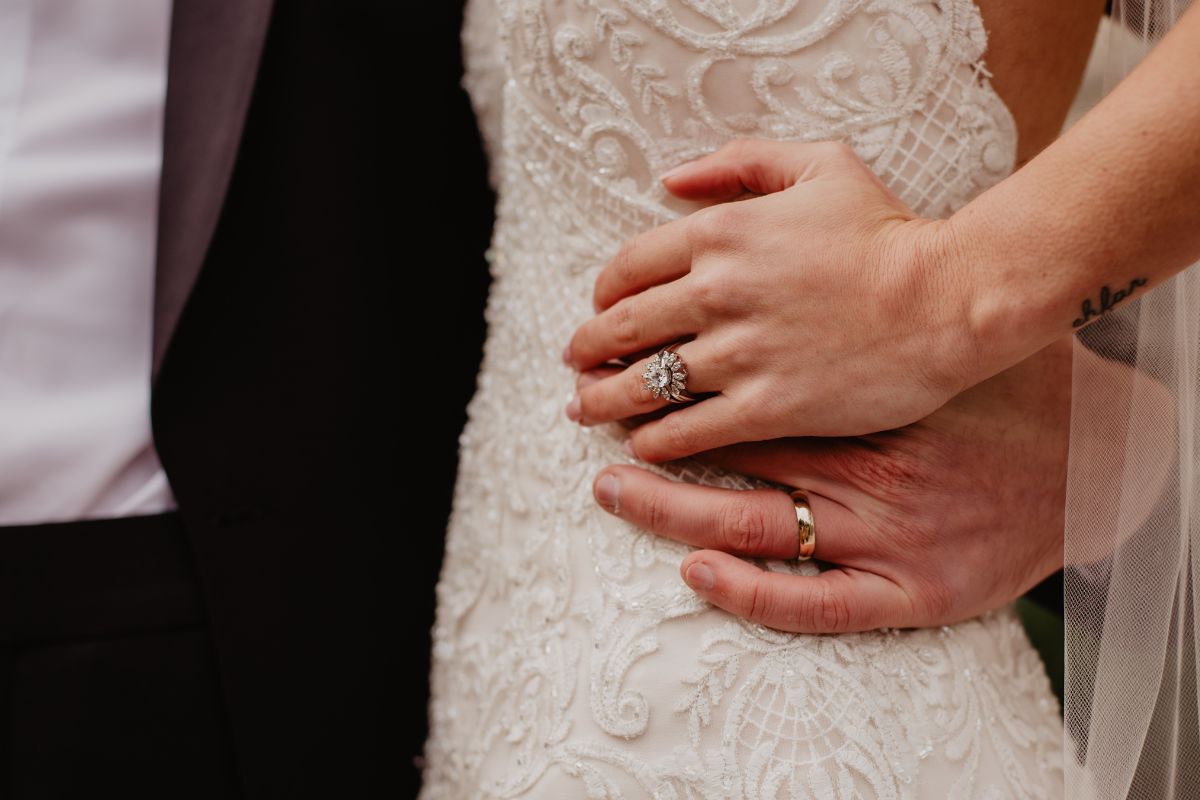
Melee diamonds, though smaller than their more prominent counterparts, hold a distinct position in the realms of culture and symbolism. They enhance the intricate beauty of jewelry pieces where their collective sparkle often exceeds the sum of their parts.
Diamonds in Fashion
Melee diamonds are a staple in diamond jewelry, adding a touch of elegance to a variety of accessories. Particularly in diamond earrings and bridal rings, these small gems play a crucial role. Their versatility makes them ideal for fashion-forward trends, as they can be set in intricate patterns that larger stones can't achieve. When you browse through current designs, it's clear that melee diamonds can transform a simple band into an eye-catching piece. In instances like engagement rings and wedding bands, they work harmoniously to frame a central stone or to create a shimmering effect that symbolizes enduring love.
Symbolism in Jewelry
The use of diamonds in jewelry is deeply anchored in symbolism, with each setting telling its unique story. Eternity bands, for example, represent a continual loop of love, often given to mark a significant milestone in one's life. Here, melee diamonds encircle the band, giving a never-ending sparkle that mirrors the concept of infinity.
Melee diamonds support the primary stone in engagement rings and enhance the ring's overall brilliance, symbolizing the added richness a partner brings to life. They may be small, but their significance is mighty, especially when they accentuate the significance of life's most precious moments. In the case of wedding bands, melee diamonds complement the story that started with the engagement, representing the strength and beauty of a life built together.
Remember, each melee diamond contributes to a larger narrative within your jewelry, adding its voice to the chorus that rings out through your most cherished moments.
Ethics and Sustainability
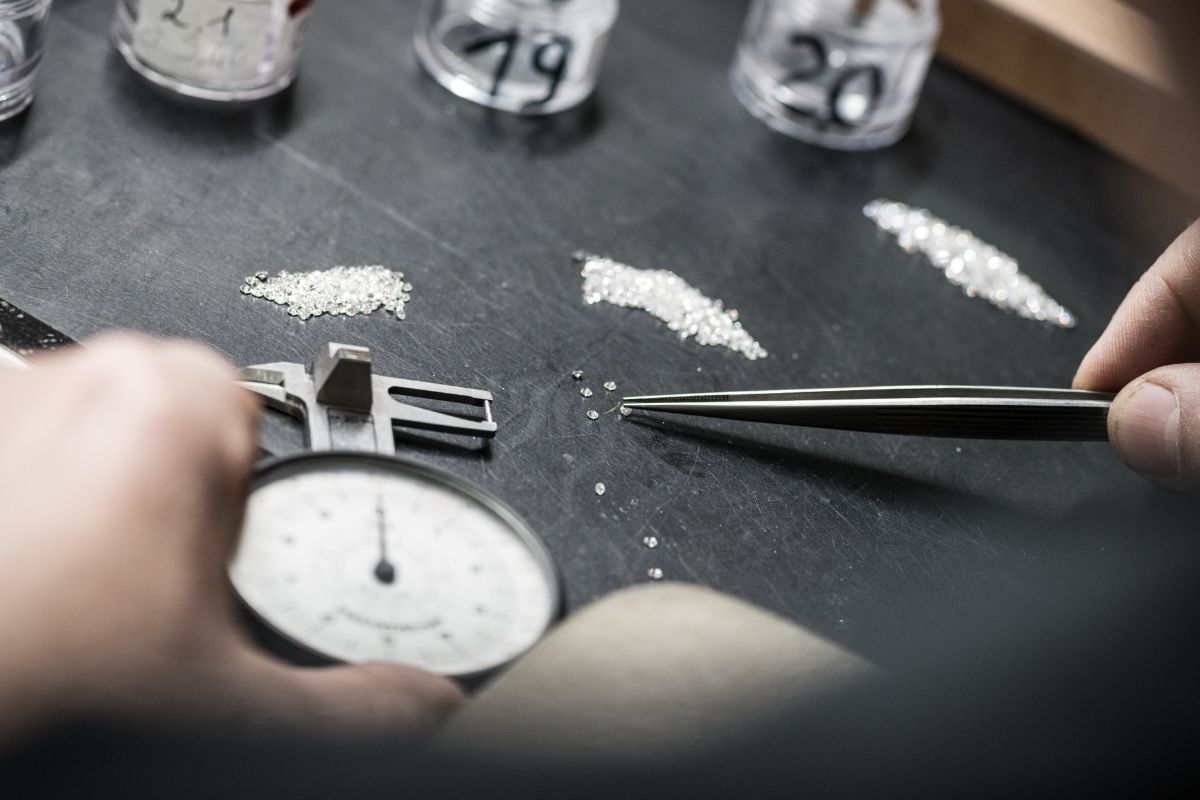
In the melee diamond market, your concerns about ethical sourcing and environmental impact are critical. You play a role in influencing the jewelry industry to uphold high standards of trustworthiness and responsibility.
Ethical Sourcing
When you purchase melee diamonds, understanding the origin of these gems is essential. Ethical sourcing ensures that the diamonds are mined and sold in ways that do not finance conflict, exploit workers, or disadvantage diamond-producing communities. The Gemological Institute of America (GIA) provides certifications that can help you verify the ethical origins of natural diamonds. In contrast, lab-created diamonds offer a different value proposition, assuring you of a product free from the ethical dilemmas often associated with mining.
Environmentally Friendly Practices
Your choice to support environmentally friendly practices influences the jewelry industry to prioritize sustainability. Melee diamonds sourced from operations that minimize ecological impact set a positive precedent. Look for jewelry companies that implement policies for waste reduction, carbon footprint minimization, and conservation of natural resources. Such measures ensure the longevity and health of the natural environments affected by diamond extraction. By choosing companies that are transparent about their environmental efforts, you contribute to a more sustainable and accountable melee diamond market.
Advancements in Gemology
In the realm of melee diamonds, you're witnessing an era marked by remarkable progress in technology and grading, manufacturing efficiencies, and a forward-looking perspective on what these gems hold for the jewelry industry.
Technological Breakthroughs
Recent years have brought to your attention impressive technological advancements in the field of gemology, especially in the identification and classification of melee diamonds, which are small diamond chips often used in pavé settings. The Gemological Institute of America (GIA) has been pivotal, implementing advanced screening methods that meticulously distinguish natural diamonds from synthetics and treated stones, assuring you of the integrity of your purchases.
Improving Diamond Grading
The GIA has also refined grading practices to include the 4Cs (Color, Cut, Clarity, and Carat Weight), ensuring that the quality of the cut and other crucial aspects are evaluated with unprecedented accuracy. This has instilled a higher level of trust and quality assurance in the jewelry industry, which you, as jewelry designers and consumers, substantially benefit from.
Melee Diamond Manufacturing
Your melee diamonds are crafted in manufacturing hubs that have embraced a blend of artisanal expertise and automated precision. This symbiosis has led to a streamlining of production while retaining the nuanced diverse elements that resonate with your demand for both quality and volume, safeguarding the vibrancy of the industry and meeting your needs effectively.
Future of Melee Diamonds
Looking ahead, melee diamonds stand to signify more than mere adornments. Their integration into innovative jewelry designs is evolving, promising you an exciting array of options. As the industry progresses, expect continual improvements in grading and certification processes that will further empower your decisions as consumers and connoisseurs within the bustling kaleidoscope of the jewelry market.
Artistry and Craftsmanship
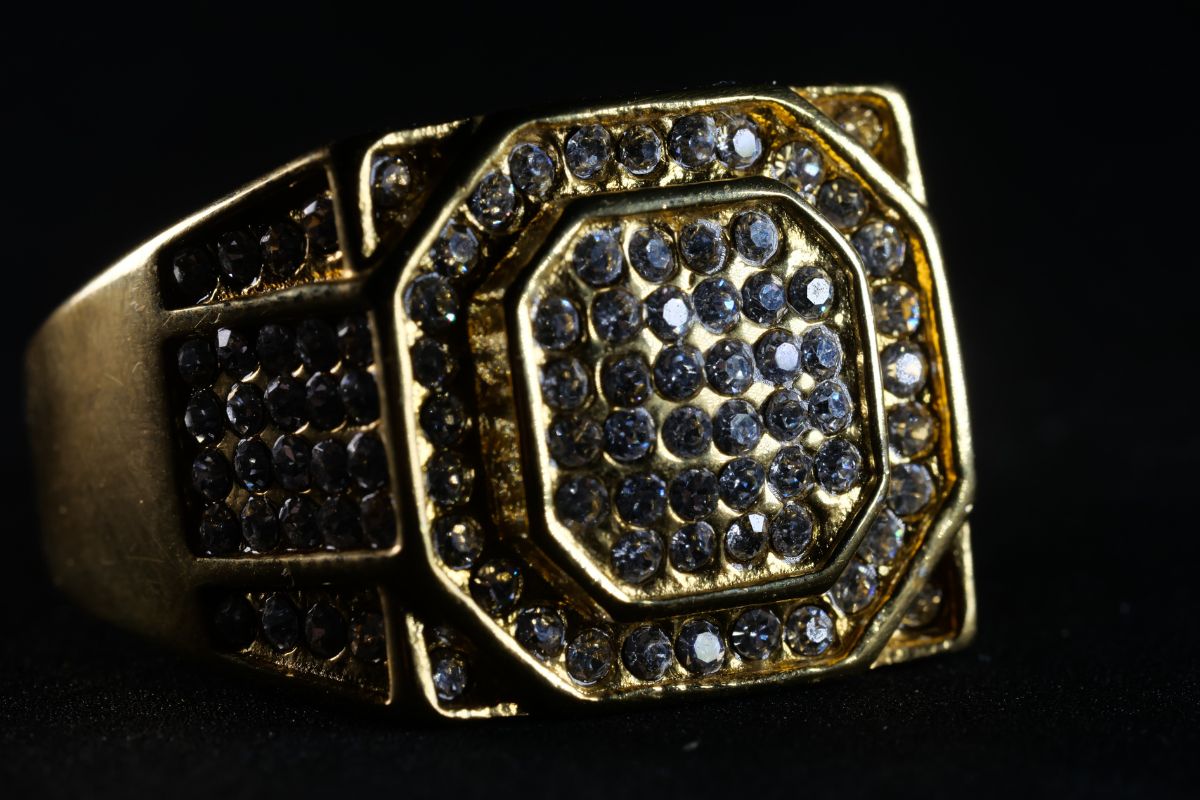
In the realm of diamond jewelry, the fusion of creative design and intricate craftsmanship elevates a piece from mere adornment to a work of art. Understanding this interplay is essential as you explore the allure of melee diamonds in jewelry settings.
Jewelry Design Evolution
Historically, the evolution of jewelry design reflects cultural and aesthetic shifts. You've seen diamond jewelry transform through the ages, with engagement ring designs becoming particularly expressive of personal style and taste. This evolution is marked by an increase in complexity and creativity, incorporating melee diamonds to enhance sparkle and scintillation.
The Role of Melee Diamonds
Melee diamonds, despite their small size, play a pivotal role in the beauty of a jewelry piece. These diminutive diamonds are adeptly used to add layers of intricacy and radiance. When set in a pavé setting, melees enhance the central stone’s brilliance or create a shimmering effect on bands, making your diamond jewelry catch the eye with every subtle movement.
Notable Jewelers and Designers
Jewelers such as James Allen, Brian Gavin, and White Flash are industry leaders who have combined artistry with precise craftsmanship. Your selections from these designers promise cutting-edge designs and exceptional quality. Each jeweler brings a unique vision to diamond jewelry, ensuring that every piece you choose is both a testament to enduring design and impeccable artisanship.
Also Read
Frequently Asked Questions
In this section, you'll find concise answers about melee diamonds that address key concerns like pricing, quality evaluation, size, certification, their role in jewelry design, and their use in engagement rings.
What factors affect the price of melee diamonds?
The price of melee diamonds is influenced by the same factors that determine the value of larger diamonds: the 4Cs—carat weight, clarity, color, and cut. Since melee diamonds are small, usually less than 0.20 carats, their individual prices are lower, but the total cost can add up quickly depending on these quality factors and the quantity used in a piece of jewelry.
How can one determine the quality of melee diamonds in jewelry?
To ascertain the quality of melee diamonds in jewelry, examine the uniformity of their cut, color, and clarity. Professional grading by organizations like GIA can provide a comprehensive quality report, although melee diamonds are not always certified due to their size. Magnification tools such as a jeweler's loupe can aid in inspecting these small diamonds.
What are the typical size ranges for melee diamonds used in rings?
Melee diamonds are typically small, ranging from just under 0.001 carats (1/1000th of a carat) to 0.2 carats. These are most often used to accentuate larger stones or create a sparkling effect on bands, with sizes from 0.01 to 0.15 carats being common in engagement rings and other fine jewelry.
Is it common to find GIA certifications for melee diamonds?
It's uncommon for melee diamonds to carry individual GIA certifications due to their size and the high cost of certification for each small stone. Instead, parcels of melee diamonds may be assessed for general quality. Pieces with a significant total carat weight of melee diamonds, however, may be accompanied by broader assessments from reputable labs to verify overall quality.
What is the significance of melee diamonds in modern jewelry design?
Melee diamonds play a crucial role in modern jewelry design, offering versatility as they are used extensively to add brilliance, texture, and detail. They provide a cost-effective way to add sparkle and enhance the presence of larger center stones in many pieces of fine jewelry.
How are melee diamonds incorporated into engagement rings?
In engagement rings, melee diamonds are often set around a larger central stone in a halo setting or along the band in pavé, channel, or other decorative settings. Their primary role is to complement the center stone and add overall brilliance and visual appeal to the ring.
Checkout some of our top collections:
